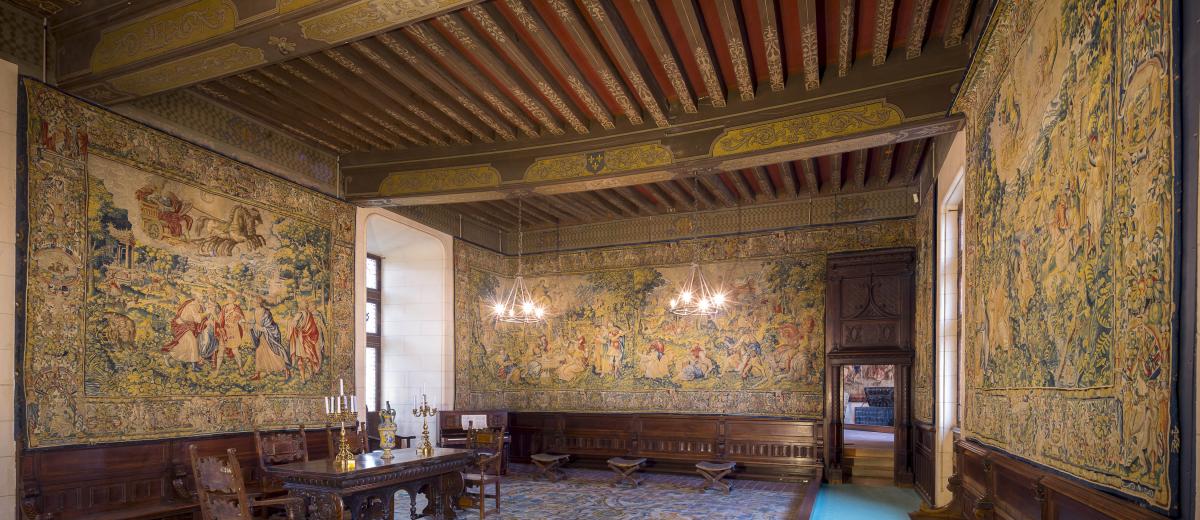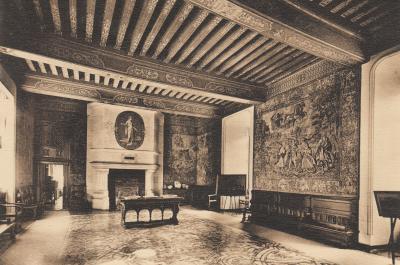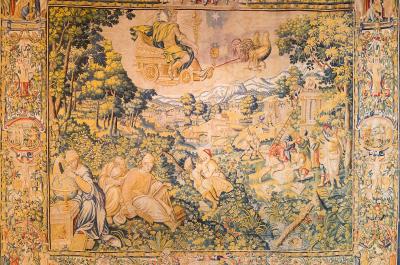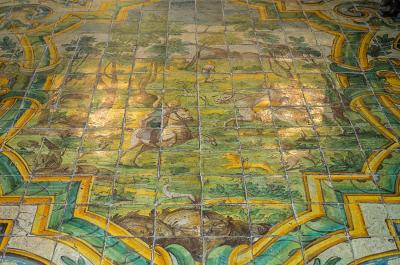The council chamber

During the 15th and 16th centuries, the Council Chamber was the official state room. It was used for the most important events in lordly life, such as audiences, judgements and feasts.
The de Broglies paid particular care and attention to the furnishing and decoration of this room and commissioned from their architect, Paul-Ernest Sanson, fixed benches for the walls and a polychrome ceiling with, on the central beam, their coat of arms. On each side, mixed with the floral decoration, are the initials "B" for de Broglie and "S" for Say, the princess's maiden name.
The floor of this room was also adorned with a major work of art: Majolica tiling.
The Planets and Days Tapestries
As a masterpiece of late 16th century woven art, The Planets and Days Tapestries is once again on show at Château de Chaumont-sur-Loire, in the Council Chamber, after several years out of sight and one year under restoration in the workshops of the Royal Manufacturers De Wit in Belgium.
Acquired in 1889 by Prince and Princess Henri-Amédée de Broglie, this eight-tapestry wall hanging (of which there are only two copies in the world – this one at Chaumont-sur-Loire and the one at the Bavarian National Museum in Munich) was woven in the latter part of the 16th century (1570) in the studio of master heddle-setter Martin Reymbouts in Brussels. The tapestries have been assembled to grace the walls of the large room in the East Wing (Council Chamber) on the first floor of the Château.
The State decided to keep this tapestry collection in its original place when it acquired the Domain from Princess de Broglie in 1938, and the work was listed as a Historical Monument the same year when the Château's first inventory was being carried out. The main theme running through these famous Planets and Days Tapestries is astrology. Each deity of Roman mythology – corresponding to a day of the week and a planet – is seated in a chariot symbolising the movement of the stars. One or more signs of the Zodiac feature in the wheels of the chariot, which is drawn by a real or imagined animal in connection with the deity.
Depicted along the bottom are activities placed under the influence of the deity or mythological or biblical scenes, taking place in wooded landscapes. Each piece is surrounded by thick borders decorated with grotesques and cartouches of historiated scenes with a bearing on the central composition. On the tapestries it is possible to make out Diana, Saturn, Apollo, Venus, Mars and a fragment of another tapestry from Martin Reymbouts' studio, The Marriage, as well as Mercury and Jupiter.


